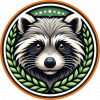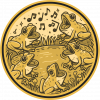About the Series
Are you looking for ways to grow your conservation technology knowledge and skills this year? Tech Tutors: East Africa is your opportunity to learn practical skills and steps that will become the building blocks you need to push your conservation tech work and research forward!
Returning in February 2023, WILDLABS Tech Tutors is the virtual series that answers the "how do I do that?" questions of conservation tech. With a new regional focus, our fourth season of Tech Tutors will feature outstanding expert speakers across East Africa who will cover a variety of conservation tech topics and themes. Organised and hosted by our first East Africa Regional Community Organiser, Netty Cheruto, our speakers will provide quick, practical, and interactive answers to questions emerging from our growing regional community.
Our aim this season is to cover tools and topics that help address conservation challenges unique to East Africa and the needs identified from research, while also opening up new tech skills for our global community. Wherever you are in the world, we hope you'll join us!
Can't make it to an episode this season? Don't worry! You can find every tutorial after it airs on our Youtube channel. Want to catch up on the 30+ tutorials covered in earlier seasons? Check out all episodes and extra resources from previous seasons here: Season 1, Season 2 and Season 3.
Here is the recording for this tutorial.
Meet Your Tutor: Arthur Muneza
Arthur Muneza is a wildlife ecologist working as the East Africa Coordinator for the Giraffe Conservation Foundation (GCF). Arthur’s role involves bringing together research efforts and partnerships to secure the future of giraffe species in the region. The projects he oversees focus on studying the spatial, behavioral and disease ecology of giraffe populations to better conserve and manage them. Through this, GCF has been able to strategically implement the Twiga Tracker Initiative in East Africa and beyond. With over 225 tracking units deployed, Twiga Tracker is the largest GPS satellite tracking study ever conducted on giraffe aimed at understanding the spatial ecology of giraffe species in Africa.
Arthur’s interests lie in understanding the linkages between the conservation of large mammals, human wildlife interactions and the strategic implementation of practical initiatives. You can learn more about Arthur's work here and about Twiga Tracker here.
What will I learn in this episode?
On the 9th of February 2023 (4-5pm, EAT), Arthur Muneza will take us through our first tutorial that breaks down the steps you can follow when fitting GPS tags on giraffes to study their movement. With lessons from his work with the awarding winning Twiga Tracker Initiative, Arthur will provide the foundational tools and technical know-how of starting off a biologging project.
With a practical case study, you will learn the different components involved in deploying GPS tags on giraffes, including a snippet on how best to fit the tags and conduct a movement study.
How can I learn more about fitting GPS satellite tags to study the movement of giraffes?
GCF has several resources including scientific publications and reports that can guide your research and work. Below is an example of one, and you can find more information and resources on the GCF website, in the resources section.
If I need to take the next step with giraffe GPS satellite tagging, what is the first thing I should consider?
I would ensure that there is proper monitoring and follow-up of the GPS tags as well as proper analysis of the data collected.
GCF is for example using different analytical techniques, to develop scientific studies on the interaction of giraffes with their habitat. Using geospatial analysis and satellite imagery GCF and affiliated researchers are investigating how giraffe interact with their environments across space and time.
What advice do you have for a complete beginner in this subject?
For a beginner, it is always best to seek to work with individuals who have experience in giraffe immobilisation. The immobilisation process is very daunting and requires the utmost care. If working in areas where government wildlife vets handle every aspect of immobilisation and tagging, then it would be better to spend more time fine tuning the research questions to understand to the fullest extent the ‘what, how, where, and why’ of the tagging the determine the best course of action.
Learn more about upcoming Tutorials
For more information about Tech Tutors, East Africa, visit the series page or contact Netty Cheruto [email protected]






Add the first post in this thread.